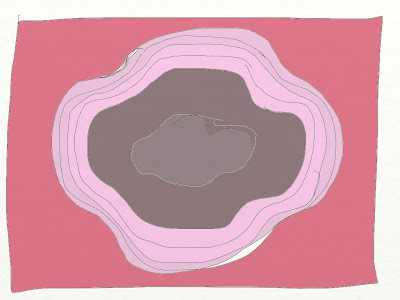 |
| Copy of one of very few pieces of sculpture recovered from Harappa site; copies of animal seals with still un-deciphered Harappan script. Lucey Bowen, 2012. |
For Gourmet enthusiasts, 1999 marked a seismic shift as rattling to those readers as Hong Kong's reversion to Chinese control was for old-Asia-hands:
Gourmet got a new editor, Ruth Reichl. As she would be the first to point out, the magazine had a lot of good things going for it. One of the features of that first year was an alphabet for cooks; M.F.K. Fisher had created that decades earlier.
A crop of new-Asia-hands like John A. Glusman imbued old places with a distinctly post-modern flavor, as in his "Bali High, A Legendary Island's Idyllic Resorts." Gusman amends the standard history of Dutch colonization of the island with a history of its tourism. Also heralding change is John Willoughby's "Paradise Laos." His travelling companion is a Lao friend who owns a Thai restaurant in, of all places, Ellsworth, Maine.
There's also a twist on the nostalgia trope. Nicole Mones wrote in "Beijing Looks Back; in China's capital, food is a way of contemplating the past," that Cultural Revolution-theme restaurants were springing up all over Beijing. "Nostalgia for rural poverty? For hard labor? For a movement that was designed to obliterate nostalgia itself," she asks. Like me, she turns to anthropology for answers, discovering that China's loosening of economic restrictions allows Beijingers to consider consuming a choice of many versions of the past. The Cultural Revolution, 1966-1976, for those who lived through was horrifying and exhilarating, it's remembered as a time when people lived and died for ideas, not money. For another version of the past, Mones pays a visit to the newly installed Beijing branch of David Tang's China Club.
New York:
Asia de Cuba at 237 Madison Avenue is closed.
Pondicherry at 8 West 58th Street is closed.
Shanghai Cuisine at 89-91 Bayard Street is still Shanghai Cuisine.
Cafe Spice at 72 University Place is closed.
Los Angeles:
Bombay Cafe 12021 West Pico Boulevard is still Bombay Cafe.

